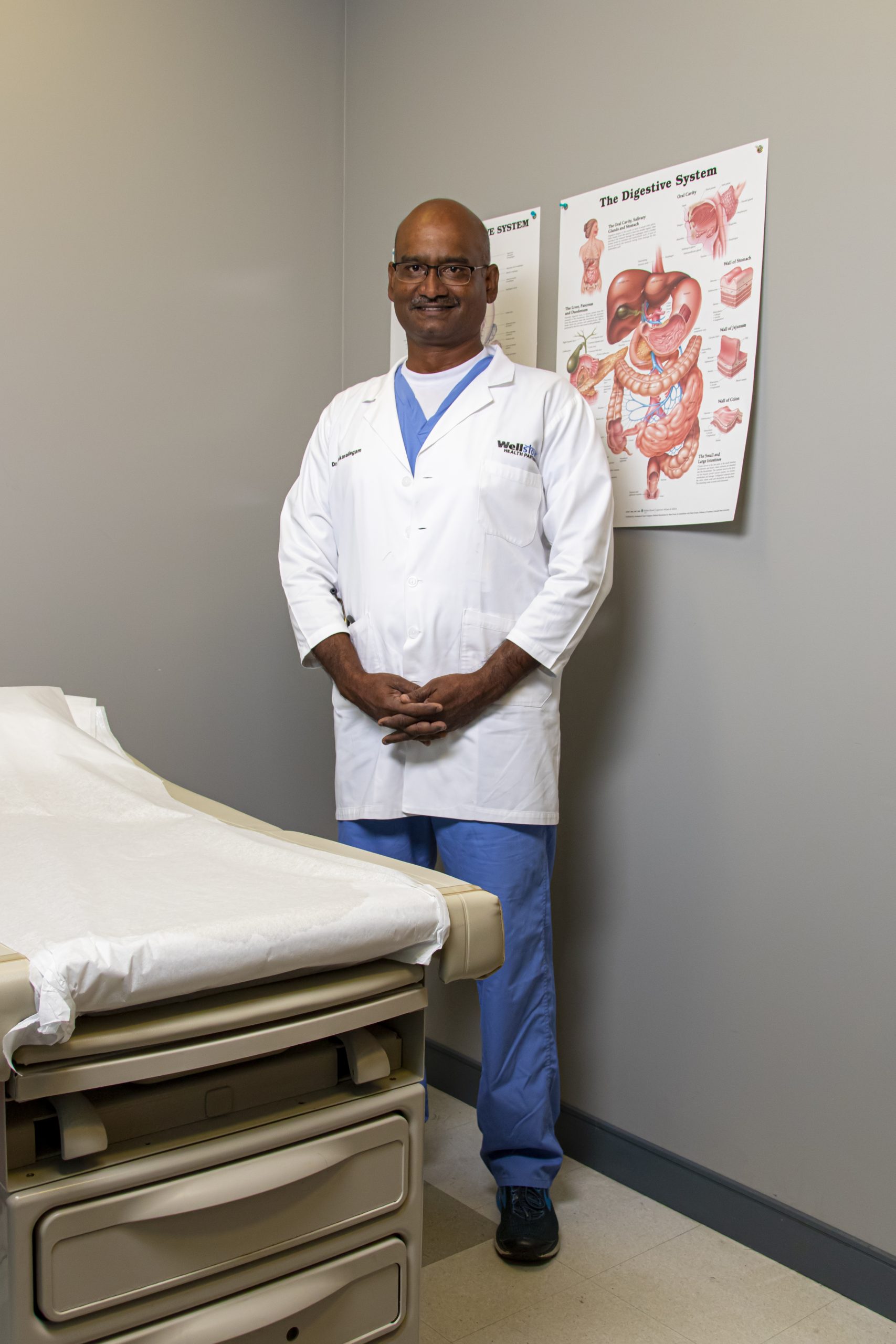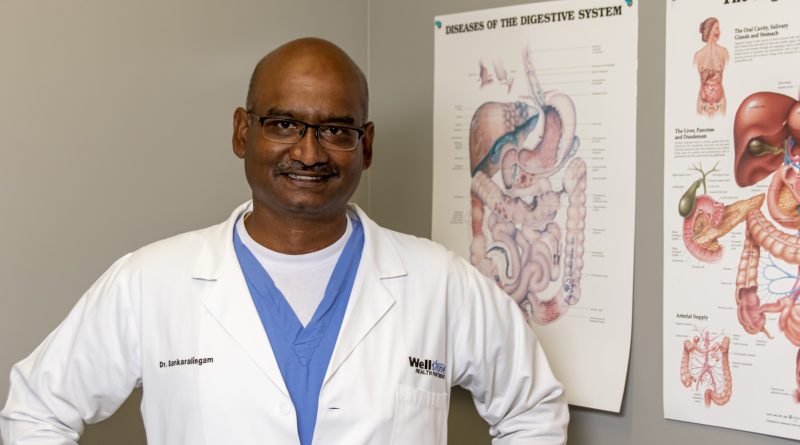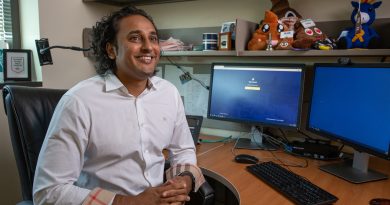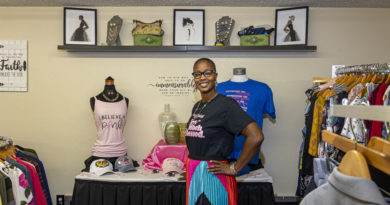Dr. S combines academic success with hands-on care
By Mandy Shelton | Photos by Skeebo
When daily life was interrupted by a global pandemic and the nation stayed home in an attempt to flatten the curve, a more-or-less captive audience indulged in prestige television, streaming services, and binge watching. Even essential workers, in their rare moments of relaxation, found solace in comfort shows such as Friends, The Office, and the beloved 2001-2010 medical dramedy Scrubs.
 “I love Scrubs,” said Dr. Senthil Sankaralingam, a general surgeon who offices with Wellstone Health Partners at Seton Medical Center Harker Heights. “It’s my all-time favorite.”
“I love Scrubs,” said Dr. Senthil Sankaralingam, a general surgeon who offices with Wellstone Health Partners at Seton Medical Center Harker Heights. “It’s my all-time favorite.”
“I watch it over and over again, and I still laugh, knowing exactly what the joke is going to be. That’s how much I love that show.”
The series’ original airing on NBC spanned the aughts, with the first season corresponding with Dr. Sankaralingam’s last year of medical school. A total of nine seasons saw the comings and goings inside a teaching hospital, as medical residents slowly became fully functioning doctors.
“The residents were a surgical resident and an internal medicine resident,” said Dr. Sankaralingam, who spent the first five years of his career at St. John Hospital and Medical Center in Detroit, where he served as chief resident. “That was pretty much a good depiction of how we functioned.”
After graduating from high school in Madurai, India, Dr. Sankaralingam moved to Austin to earn his bachelor’s at the University of Texas. Then it was off to medical school at the University of Hawaii. “I couldn’t pass the opportunity to be one of seven out-of-state students in Hawaii,” Dr. Sankaralingam said. “They usually take their students from Hawaii, but I got accepted and I couldn’t refuse it.”
His residency in Detroit brought his cerebral studies into the real-world operating room. “It was a big trauma center for Detroit, and they saw plenty of gunshot wounds,” he said. “I’m mostly academic-based; this trained me well to be a hands-on surgeon.”
Dr. Sankaralingam then returned to the place that has been home for the past 13 years. “I always wanted to be in Central Texas after I finished my training,” he said. He moved from a fellowship at Texas Medical Center in Houston to the former King’s Daughters in Temple, then to three years of private practice at Metroplex in Killeen before he decided to join Seton.
“I fell in love with Central Texas when I did my undergrad at UT Austin. Central Texas is a lot different than the rest of Texas,” he said. “The weather’s also so perfect. I like hot weather; that’s probably why I say that.” His preferred outdoor activities of golf, water sports, and riding bikes with his daughter are within easy reach of his home in Georgetown, though he still has favorite restaurants in Bell County.
“We lived in Harker Heights for six years. My son and I used to go to Bobby Lupo’s. That’s our favorite place,” Dr. Sankaralingam said, praising the Thai chili chicken wings. “And then Bite the Bagel—we make it a point to go there as much as we can.”
A typical day at Seton begins with on-call operating procedures or a weekly all-day clinic. “On the days we’re not in the clinic, we take the ER calls where we can expect anything from gall bladders to appendicitis to colon infections to hernias,” he said.
Dr. Sankaralingam often goes by the moniker Dr. S, which he explained is often easier for patients to pronounce than the full five syllables of his last name. Communication with his patients takes priority, after all. “I value that more than anything else,” he said.
“If you really look at the patients who understand what they’re going through, they recover a lot better with the peace of mind than people who do not understand it really well,” Dr. S said. “I always encourage them to ask me more questions, because that is one way of me knowing that they are really involved in the process. If a patient is not very involved in their process, then they may not understand it fully, and if they do not understand it fully, then they will have difficulty recovering after surgery.”
Dr. S also takes care to invite the patient’s support system into the conversation. “I have many times rescheduled patients’ visits for the second time to bring their family in,” he said, adding that he has observed patients tuning out after receiving news of a difficult diagnosis. “Our human brain tends to fixate on things that can potentially affect us. So in that situation, having an extra set of ears always makes a huge impact,” he said.
Dr. S frequently tells his patients: “Listen, I do the surgery and I walk away, but you are the one dealing with all the consequences of surgery.” Ultimately, he can only do so much.
“As a surgeon, I can only make sure that I can do the job that I am trained to do, but I am not a healer. I will let God heal the surgeries that I do.”




